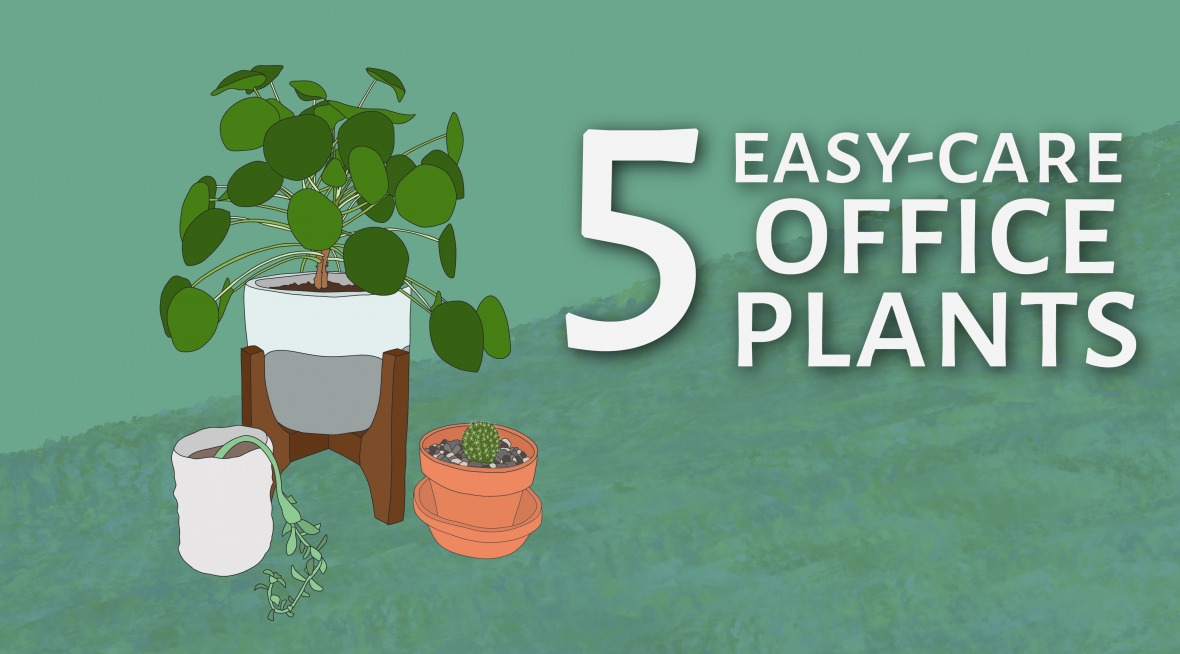It’s summertime, produce is plentiful and plant stores are buzzing! It’s the perfect time to find a unique houseplant to add a little biophilic magic to your workspace. But nobody wants their fussy houseplant to wither away, especially in front of their coworkers. Taking care of houseplants is a learning process no matter which stage of plant parenthood you’re in.
Are you nervous to get started? No idea how to take care of a plant? We’ve assembled a list of some of the easiest-to-care-for plants for your office, from the eye-catching Pilea to the humble and versatile Pothos. Which one will you choose for your office?
Pothos – A Rewarding and Beautiful Starter Plant
Epipremnum aureum, simply known as Pothos, is a well-known starter plant that can make your workstation feel like a jungle in no time. Because of their accessibility and easy care, Pothos plants are sometimes seen as basic, but we couldn’t disagree more. We have Pothos plants all over the Worklab because they’re great even in low light conditions, and they’re excellent for climbing, draping, and sprawling across environments. The best part? In the right space, with plenty of light, they can grow fast. They come in all sorts of shapes and colors, so there’s no reason to stick with just one variety! The beautiful Manjula and Marble Queen varieties are great for a touch of elegance, the Neon variety is bright and striking, and the arrowhead-shaped Cebu Blue adds a little moodiness to any space!
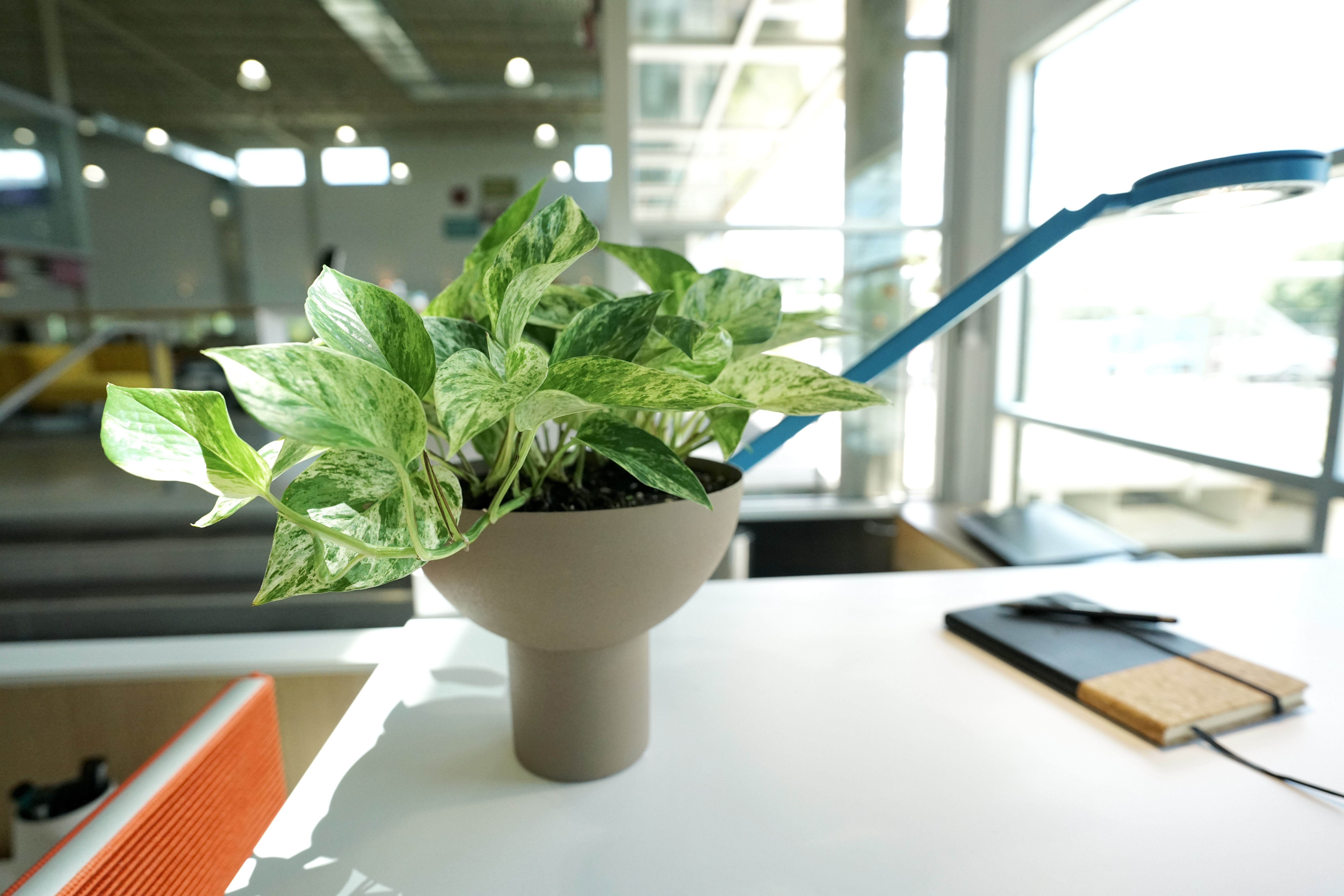
Care & Tips:
- Pothos can handle anything from bright indirect light to low light.
- They thrive in nutrient-dense soil, but can survive in nutrient-poor soil or even just a jar of water (they’re excellent for propagating!)
- If your Pothos is highly variegated (patterned in a second color), the leaves may lose variegation over time if they don’t receive enough sunlight, as only the green color in the leaves can make energy for the plant.
Snake Plants – For the Forgetful Plant Parent
Dracaena trifasciata, charitably nicknamed Snake Plants, are a very popular choice because if you forget to water them for a few weeks, you don’t need to panic! They’ll most likely appear just as you left them. Perhaps one of the most drought-tolerant houseplants you can find, Snake Plants are very forgiving of forgetful plant parents. They have fun graphic patterns and they’re a nice vertical option for the office, so they’ll add excitement to any corner or shelf without taking up too much space!
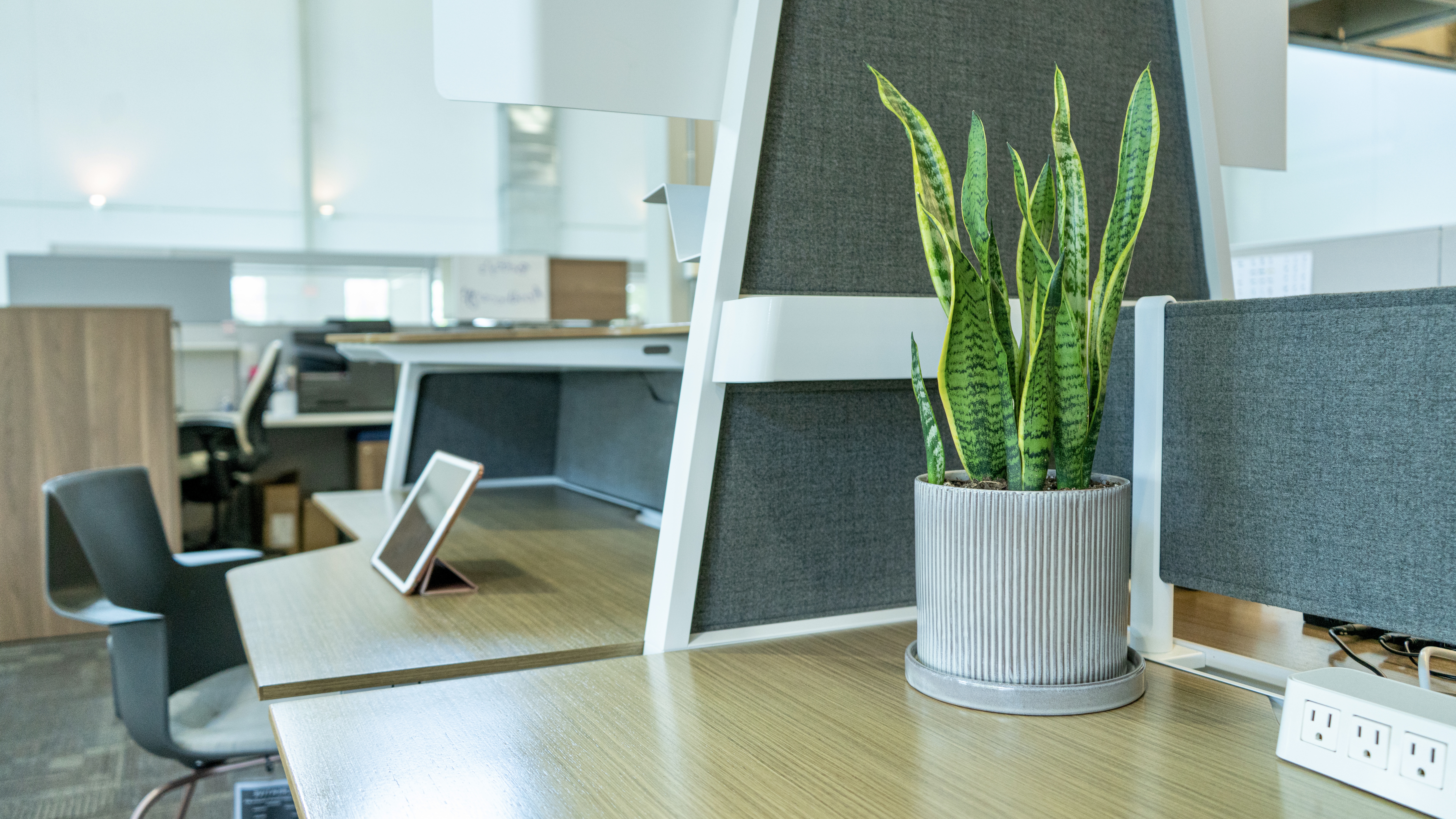
Care & Tips:
- Snake Plants love bright, indirect light, but can also grow in a shady corner (although, like with most plants, growth is inhibited in low-light conditions)
- Let your soil dry out between waterings. The easiest way to kill your Snake Plant is to overwater. This can lead to root rot and can be very tricky to restore your plant back to health.
- Snake Plant leaves love to collect a lot of dust. Gently wipe them down with a damp cloth as needed. This helps the leaves collect as much sunlight as possible!
ZZ Plants – Style Without the Fuss
Zamioculcas, or ZZ Plants, are becoming a really popular choice because they’re so visually striking and easy to care for. These tropical plants, originally from Eastern Africa, are known for their glossy leaves that range from bright lime in their youth to a deep emerald green in maturity. ZZ Plants can tolerate a wide range of conditions, making them perfect as a stylish, low-maintenance office plant!
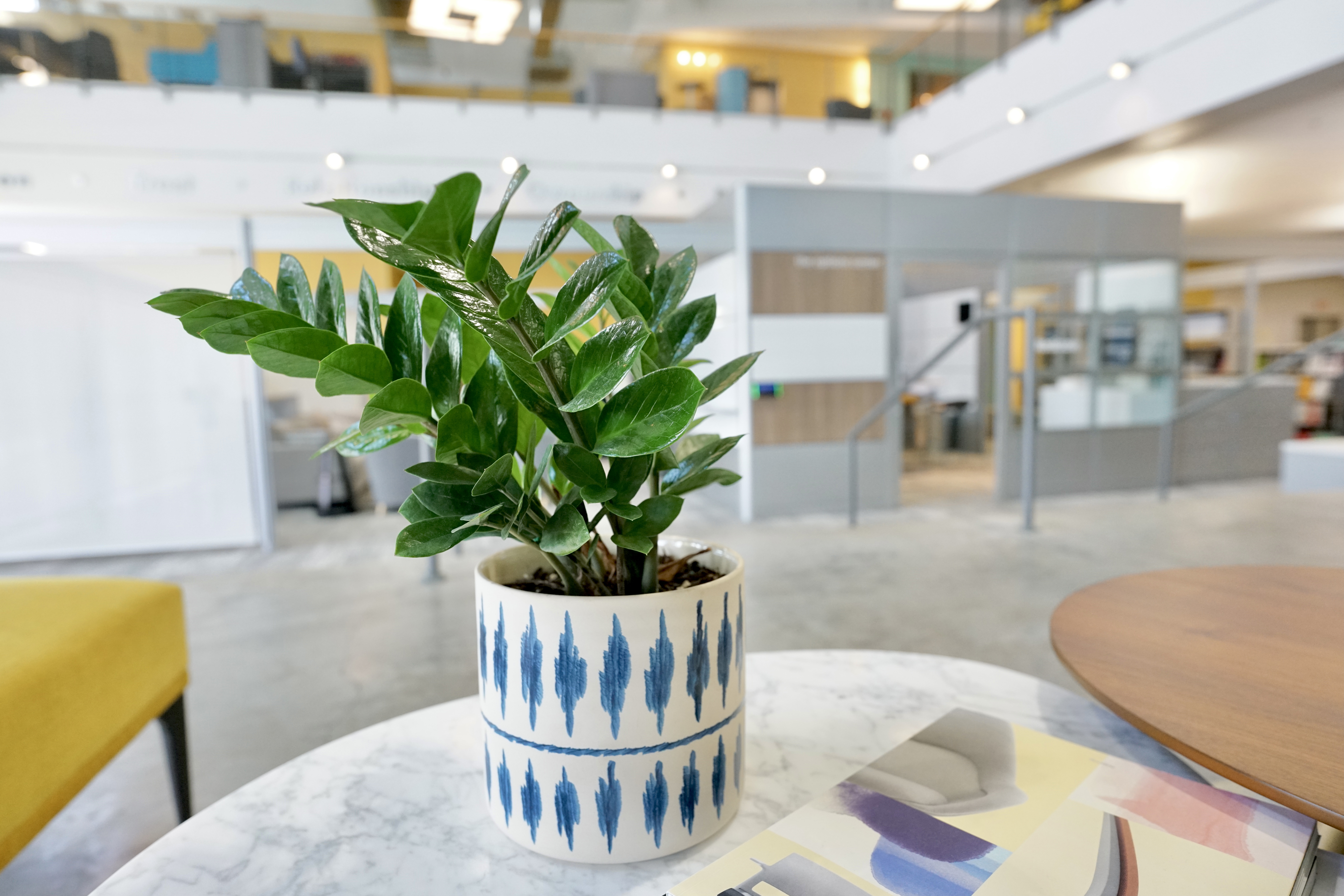
Care & Tips:
- ZZ Plants do best with medium to high indirect light, but can also tolerate low light conditions.
- Water every week or two, allowing the soil to dry in between waterings.
- No humidifier? No problem! ZZ Plants can tolerate low humidity conditions, and the average home or office humidity will suit them just fine.
Parlor Palms – Clear the Air
When it comes to reliability, the Parlor Palm (Chamaedorea elegans) is a true champ. Cultivated since the Victorian era, these palms are simple to maintain and grow. In the wild, you’ll find these plants growing naturally in tropical regions of the Americas, including Belize, Mexico, and Guatemala. While this is a tropical plant, it’s surprisingly well suited for mild indoor conditions and is praised for its air-purifying capabilities!
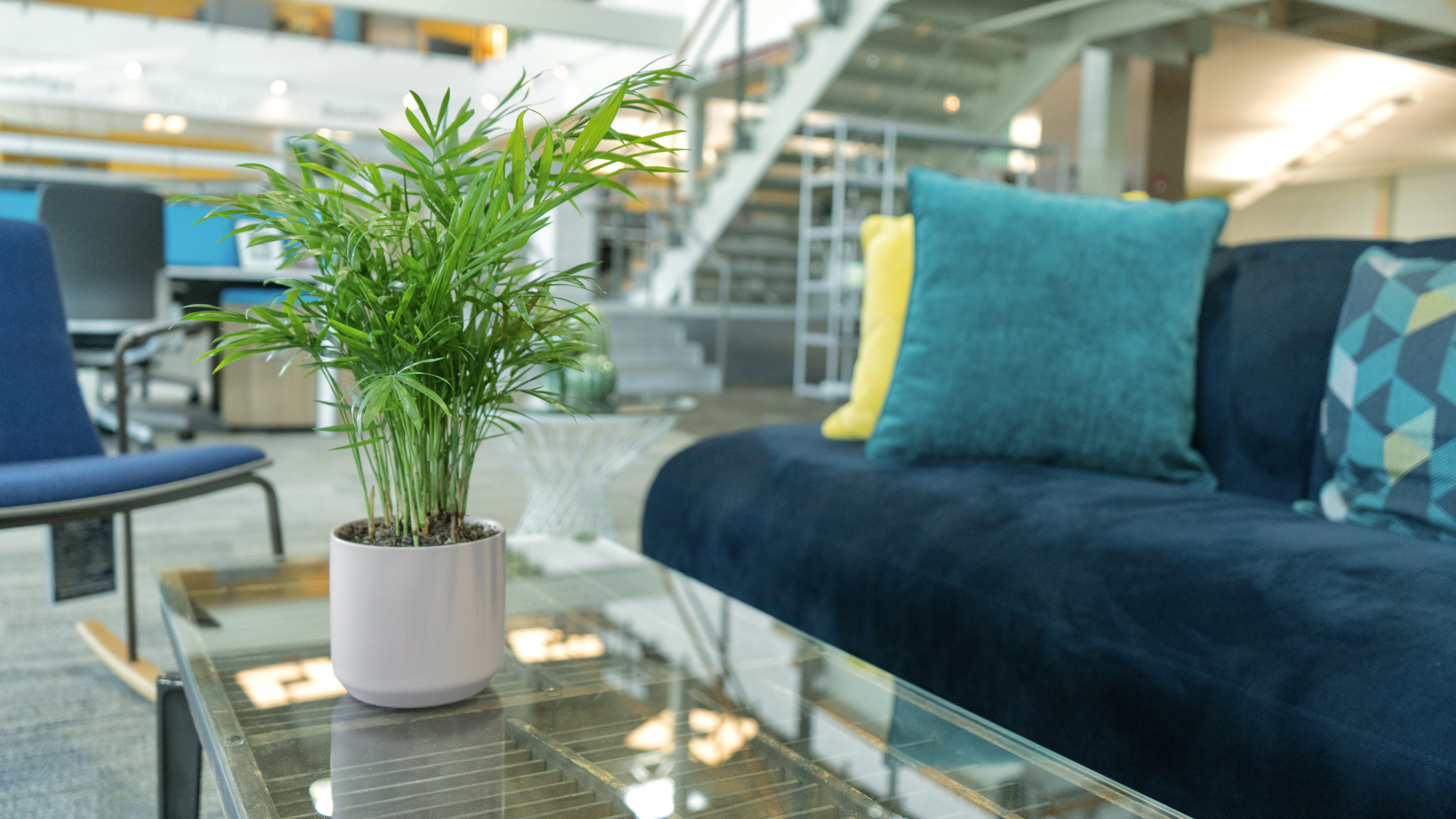
Care & Tips:
- Parlor Palms can tolerate lower light conditions, but will do best in medium to bright indirect light.
- Water whenever needed, letting the soil dry out between waterings. This can vary depending on the amount of light the plant gets.
- These plants love humidity, but they don’t typically need special attention. If you want to spoil your Parlor Palm, have a humidifier or spray bottle nearby to increase the humidity around your plant.
Pilea – The Conversation Starter
Looking for a plant that makes people stop and say “what is that?”. Pilea Peperomioides, also known as the Chinese Money Plant because of it’s coin shaped leaves, is known to bring good fortune to its owners. While the Pilea’s peculiar look makes it seem high-maintenance, it’s actually a pretty easy plant to care for. Pileas love lots of bright indirect light, and do particularly well when placed by a window. Pileas also produce “pups”, little plant babies that grow from the plant’s root system. You can remove these pups and let them grow into a whole new Pilea plant!
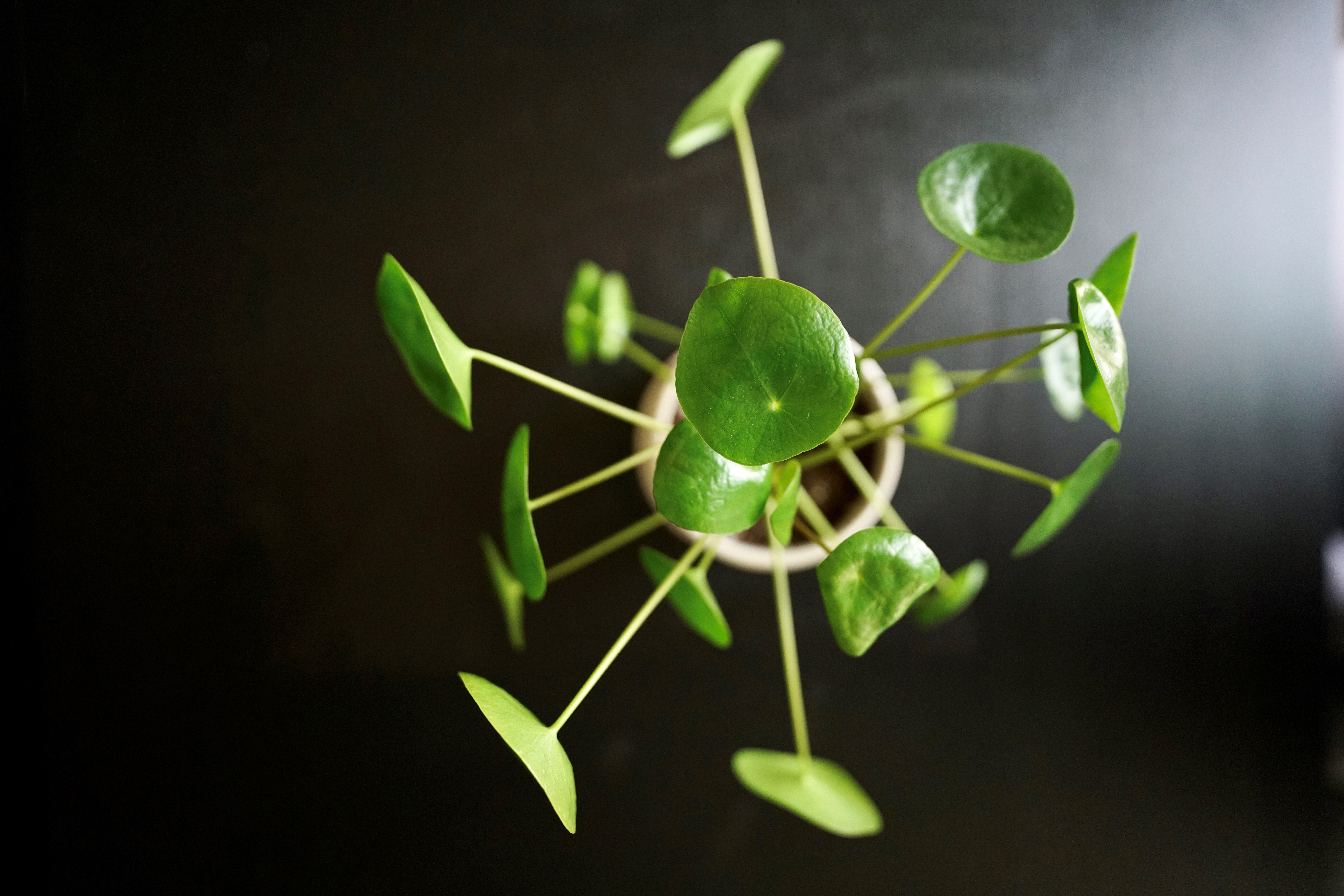
Care & Tips:
- Your Pilea will look it’s best if you rotate it periodically. That way, the leaves will be evenly distributed all around your plant.
- Generally considered safe for pet and human consumption! Maybe don’t eat your Pilea though.
- No need to spritz your Pilea, it loves a dry environment and doesn’t need extra humidity.
Good Luck, and Happy Planting!
No matter which plants you adopt, it’s important to do a little bit of research so you know how to care for them and yourself. Some plants can be toxic if ingested, so knowing beforehand which plants can harm your children or pets is an important step. And remember, taking care of plants is all about the passion you have for that plant. If you get 10 easy-care plants that you don’t really care about, then they’re more likely to get neglected over time. But if you get 1 or 2 plants that take a little extra care but bring you lots of joy (and that you love looking at everyday), chances are you’re going to take great care of them!

